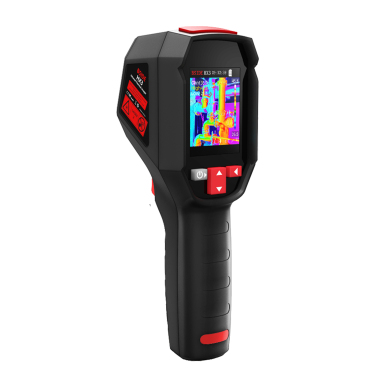
# Ear Thermometers: Accurate and Non-Invasive Temperature Measurement
## Introduction to Ear Thermometers
Ear thermometers, also known as tympanic thermometers, have become a popular choice for measuring body temperature in both clinical and home settings. These devices offer a quick, accurate, and non-invasive way to monitor temperature, making them particularly useful for children and adults alike.
## How Ear Thermometers Work
Ear thermometers use infrared technology to measure the temperature inside the ear canal. The device detects the heat emitted by the eardrum and surrounding tissue, providing a reading in just a few seconds. This method is based on the principle that the eardrum shares blood supply with the hypothalamus, the body’s temperature control center, making it an excellent indicator of core body temperature.
### Key Features of Modern Ear Thermometers:
– Fast readings (typically 1-3 seconds)
– Non-invasive and comfortable
– Hygienic with disposable probe covers
– Memory function to track temperature trends
– Fever alarms for quick identification of elevated temperatures
## Advantages Over Other Thermometer Types
Compared to traditional oral, rectal, or underarm thermometers, ear thermometers offer several benefits:
### Speed and Convenience
The rapid measurement time makes ear thermometers ideal for restless children or when frequent temperature checks are needed.
### Accuracy
When used correctly, ear thermometers provide readings comparable to rectal thermometers, which are considered the gold standard for core temperature measurement.
### Hygiene
The non-contact nature of the measurement reduces the risk of cross-contamination between users.
## Proper Usage Techniques
To ensure accurate readings, follow these guidelines:
1. Gently pull the ear upward and backward (for adults) or straight back (for children) to straighten the ear canal
2. Insert the thermometer probe snugly into the ear opening
3. Hold the device steady until the measurement is complete
4. Use a clean probe cover for each measurement
5. Avoid taking measurements immediately after being in extreme temperatures
## Choosing the Right Ear Thermometer
When selecting an ear thermometer, consider:
– Clinical-grade vs. consumer models
– Ease of use and display readability
– Memory capacity for tracking temperature history
– Warranty and customer support options
– Availability of replacement probe covers
## Common Applications
Ear thermometers are particularly useful in:
– Pediatric care
– Geriatric monitoring
– Post-operative temperature checks
– Home health monitoring
– School and daycare settings
Keyword: Ear Thermometers
## Limitations and Considerations
While highly effective, ear thermometers do have some limitations:
– Earwax buildup can affect accuracy
– Not suitable for infants under 3 months
– Requires proper positioning for reliable results
– May be less accurate if the ear is infected
## Conclusion
Ear thermometers represent a significant advancement in temperature measurement technology, offering a combination of speed, accuracy, and patient comfort. When used correctly, they provide reliable temperature readings that can help monitor health conditions and detect fevers early. Their non-invasive nature makes them particularly valuable for use with children and in situations where frequent temperature monitoring is required.
Comments are closed